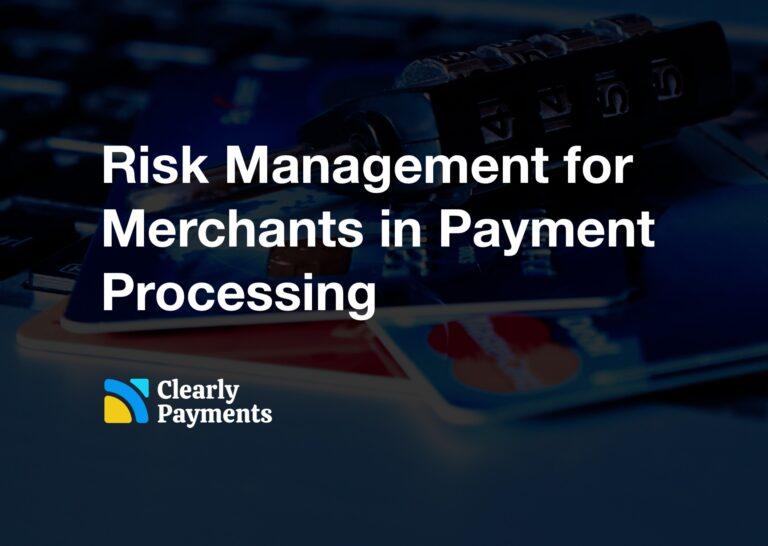Credit card fraud is an unfortunate reality that businesses must face in today’s digital age. Year after year, credit card fraud attempts are on the rise, with a staggering 46% year-over-year increase reported globally.
Merchants are often the first line of defense against different types of fraudulent activities, and their ability to promptly identify and respond to suspected credit card fraud is crucial. This article outlines key steps that a merchant should take if they suspect credit card fraud at their business.
In the unfortunate event that a merchant identifies or suspects credit card fraud at their business, it is crucial to respond promptly and effectively to minimize potential losses and protect both the business and its customers.
Here are specific steps to take if a credit card fraud incident occurs.
Isolate and Secure the Affected System
- Immediately isolate any compromised systems or payment terminals to prevent further unauthorized access.
- Change passwords and access credentials for the affected systems to prevent continued unauthorized activity.
Contact the Payment Processor
- Notify your payment processor as soon as possible. They often have dedicated fraud departments that can guide you through the next steps and investigate the incident on their end.
Document and Preserve Evidence
- Document all relevant information about the suspected fraud, including transaction details, customer information, and any suspicious behavior observed.
- Preserve evidence such as transaction records, surveillance footage, and any communication related to the incident. This documentation may be valuable for law enforcement or investigations by financial institutions.
Notify Law Enforcement
- Report the incident to local law enforcement by filing a police report. Provide them with all the documented evidence and details about the suspected fraudulent activity.
- Be prepared to cooperate with law enforcement authorities and follow any instructions they provide during their investigation.
Inform Cardholders
- If you have identified specific compromised accounts or transactions, contact the affected cardholders as soon as possible. Advise them of the potential fraud and instruct them on the steps they should take, such as contacting their card issuer to report the incident and potentially canceling their affected cards.
Cooperate with Card Issuers
- Work closely with the credit card issuers of the affected credit cards. Provide them with any requested information and cooperate fully with their investigation processes.
- Follow any instructions or recommendations provided by the card issuers to prevent further fraudulent transactions.
Review and Strengthen Security Measures
- Conduct a thorough review of your security measures and identify any weaknesses that may have contributed to the incident.
- Implement necessary changes to strengthen security protocols, update software, and enhance employee training to prevent future occurrences.
Educate Staff and Customers
- Brief your staff on the incident, providing them with information on how to recognize and respond to potential fraud in the future.
- Consider communicating with your customers about the incident, emphasizing any measures they can take to protect themselves and reassuring them of the steps you are taking to address the situation.
Monitor for Further Suspicious Activity
- Implement enhanced monitoring of transactions for a period following the incident to quickly identify and address any potential recurrence of fraudulent activity.
- Set up alerts for unusual patterns or behaviors and act swiftly if suspicious transactions are detected.
Things you can do to Lower the Chance of Fraud
To lower the risk of credit card fraud at their business, merchants should focus on several key strategies. First and foremost, staff education is crucial. Merchants should provide comprehensive training to their employees on recognizing potential signs of credit card fraud. This includes being vigilant about unusual customer behavior, such as nervousness or attempts to distract during transactions. Staff should also be trained to verify identification when doubts arise about the legitimacy of a transaction.
Implementing robust security measures is another essential step. Merchants should invest in secure payment processing systems, utilize encryption technologies, and comply with Payment Card Industry Data Security Standard (PCI DSS) requirements. Regularly updating and patching software and hardware is vital to protect against potential vulnerabilities exploited by fraudsters.
Real-time monitoring of transactions is crucial in identifying suspicious activity promptly. Merchants should leverage technology to monitor transactions and set up alerts for unusual patterns, such as multiple transactions in a short timeframe or transactions from high-risk regions.
Verifying customer information is an additional layer of defense. Merchants should discreetly verify information in cases where transactions appear suspicious, which may involve asking for additional identification, contacting the cardholder directly, or using address verification services.
Promptly reporting any suspected fraud to the payment processor is essential. Payment processors typically have dedicated fraud prevention teams that can guide merchants through the next steps and investigate the situation further.
Maintaining detailed transaction records is crucial for assisting in the event of a credit card fraud investigation. Thorough documentation can aid law enforcement, financial institutions, and credit card companies in tracking and apprehending fraudsters.
In conclusion, merchants can significantly lower the chances of credit card fraud by implementing these proactive measures. It is a shared responsibility between merchants, payment processors, and law enforcement to detect and respond to credit card fraud effectively. By staying vigilant, educating staff, and taking swift action in the face of suspected fraudulent activity, businesses can minimize losses and protect both themselves and their customers.




